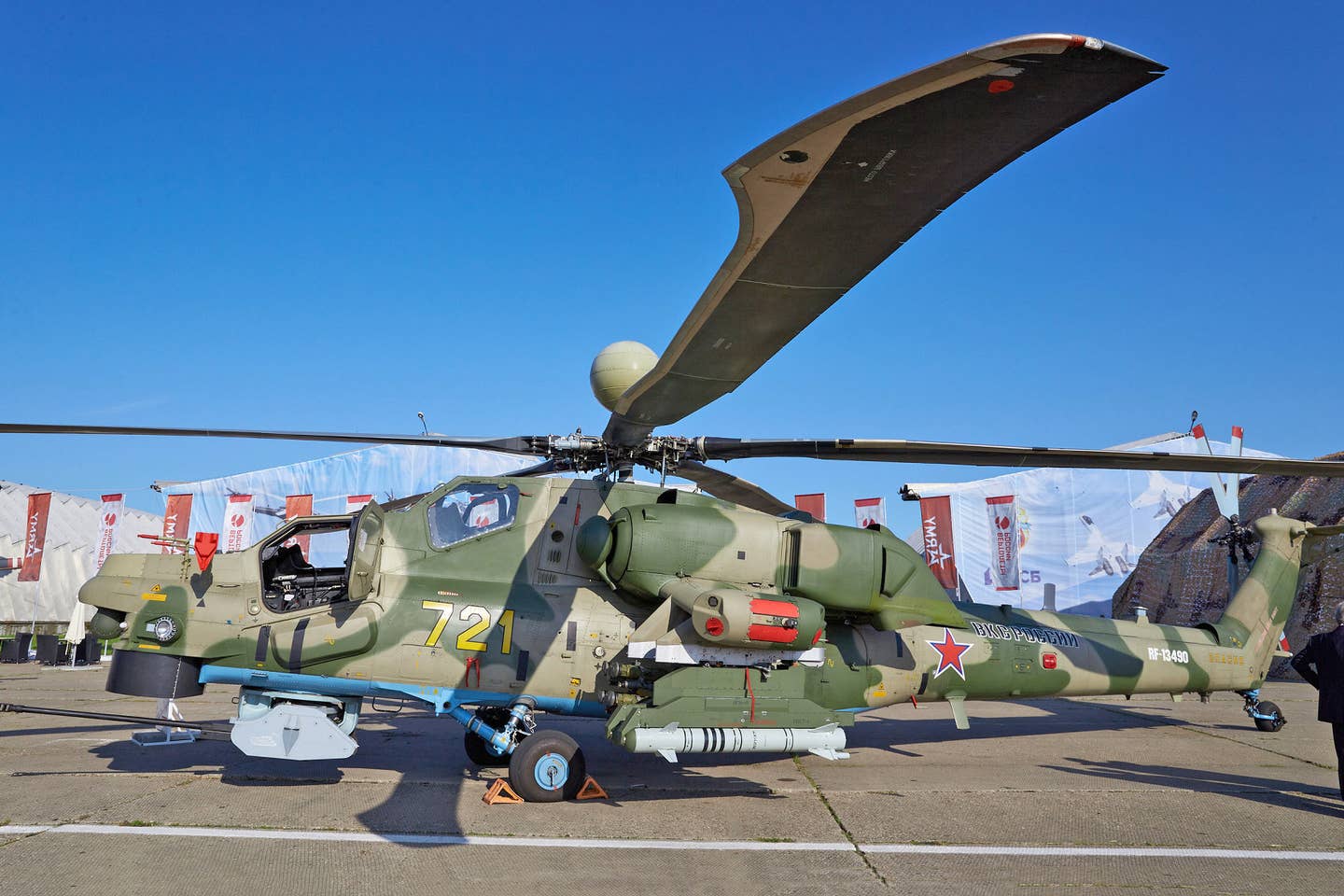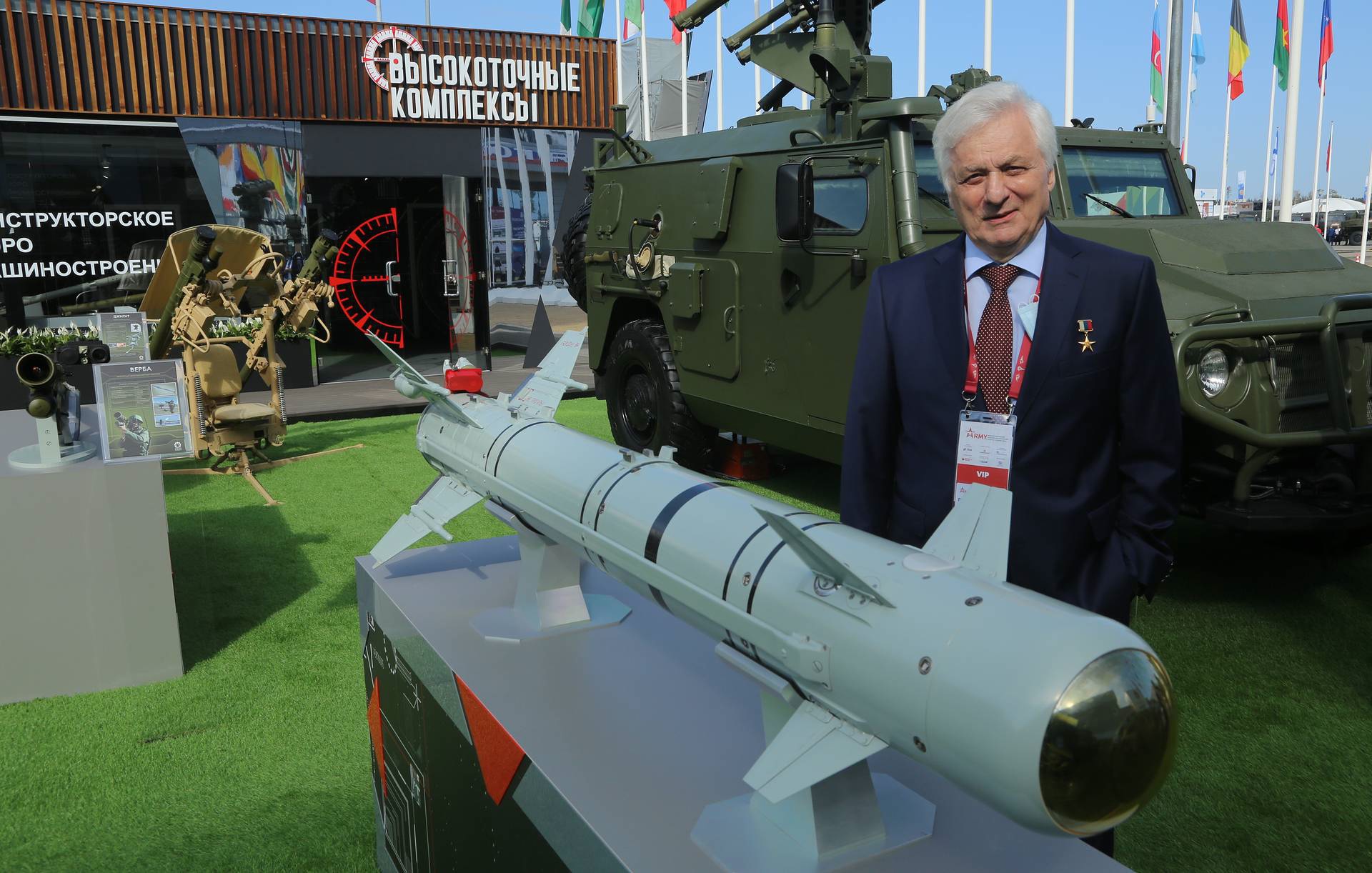Russian state corporation Rostec has claimed that its Light Multipurpose Guided Rocket, also known as Izdeliye 305 or “Product 305,” has demonstrated remarkable resistance to jamming and interference on the battlefield in Ukraine.
The missile has proven highly effective in combating enemy electronic warfare systems, consistently hitting its targets. In a statement posted on its official Telegram channel, Rostec said that throughout the ongoing conflict, the missile’s control channel has not once been suppressed by enemy electronic warfare.
This capability allows the missile to consistently deliver precise strikes, making it “one of the most successful guided weapons” in Russia’s arsenal.
The Izdeliye 305 missile is primarily used with Russia’s Mi-28NM and Ka-52M attack helicopters.
The corporation said that it features sniper-like accuracy combined with a powerful warhead that can target a wide range of enemy assets. The missile is designed to destroy various armored vehicles, fortifications, pillboxes, and even watercraft.

“One of the important features of the missile is a high degree of protection against interference and electronic warfare. To date, in combat conditions, there have been no cases of suppression of the control channel of a light multi-purpose guided missile (LMUR “Product 305”) during a special operation,” the state corporation added.
The missile operates in several modes, including a “fire-and-forget” capability. In this mode, the missile’s homing system locks onto the target while still mounted on the helicopter, allowing it to work autonomously after launch. This feature improves operational flexibility and reduces the risk to the crew.
In remote control mode, the missile is launched towards specific coordinates and initially flies in inertial mode. As it nears the target, the homing system activates, transmitting an image to the operator’s screen in the helicopter cockpit. The operator then identifies the target and guides the missile to it.
In a third mode, the missile is fired inertially toward the approximate coordinates of the target. As it nears the target, the homing system provides the operator with a live image of the terrain. The operator identifies the target, and the missile adjusts its trajectory to ensure a direct hit.
Russia’s LMUR Missile
The LMUR (Izdeliye 305) lightweight multi-purpose guided missile is Russia’s latest anti-armor weapon. It is produced by KB Mashinostroyeniya, a prominent Moscow-based defense company under the Rostec state corporation known for developing an array of missile systems, including the Iskander, Shturm, Ataka, and Igla.
Having been in series production for over five years, it is currently deployed by specialized helicopters, including the Mi-8MNP-2 used for special operations and the modernized Mi-28NM and Ka-52M attack helicopters.
Weighing 231 pounds, the LMUR missile is heavier than Russia’s traditional helicopter-launched anti-tank missiles, which are generally half their weight.
It has a range of up to nine miles, twice the distance of other comparable Russian anti-tank munitions. This enhanced range allows it to engage targets from beyond the line of sight, which offers a tactical advantage in combat situations.
The missile has been actively used in Ukraine, with British military intelligence previously highlighting its role in challenging Ukraine’s NATO-backed counteroffensive operations.

Last year, the UK Ministry of Defense identified the long-range LMUR missiles deployed by Russia’s Ka-52M attack helicopters as a key element in hampering Ukraine’s progress on the battlefield.
The missile was first introduced to the public at military forums in Russia and the Persian Gulf in 2021. It officially entered service with the Russian military in late 2022 after limited test production runs in 2016-2017. The missile had earlier undergone combat trials in Syria, where it was tested against different targets.
The LMUR is equipped with a 25-kilogram high-explosive fragmentation warhead housed within its 105-kilogram frame. Its guidance system includes a combination of inertial-satellite navigation and thermal imaging, along with a two-way communication channel that allows for real-time control and manual guidance.
This missile can be launched at specified coordinates and uses its thermal imaging system to detect and lock onto targets during the final phase of its flight, ensuring accurate strikes.
The cost of each LMUR missile was revealed through a court case involving the Russian Ministry of Defense and the manufacturer, the Machine Building Design Bureau in Kolomna.
This case pertained to delays in delivering a batch of 30 LMUR missiles in 2018. Documents reveal that each missile cost approximately 14.2 million rubles, including an 18 percent value-added tax (VAT).
From the same legal documents, estimates regarding LMUR production volumes can be inferred. The total contract value from 2018-2020 was 1,807 million rubles, sufficient to produce 127 missiles. Based on these figures, it can be assumed that production rates in subsequent years averaged around 50 missiles annually.
- Contact the author at ashishmichel(at)gmail.com
- Follow EurAsian Times on Google News




